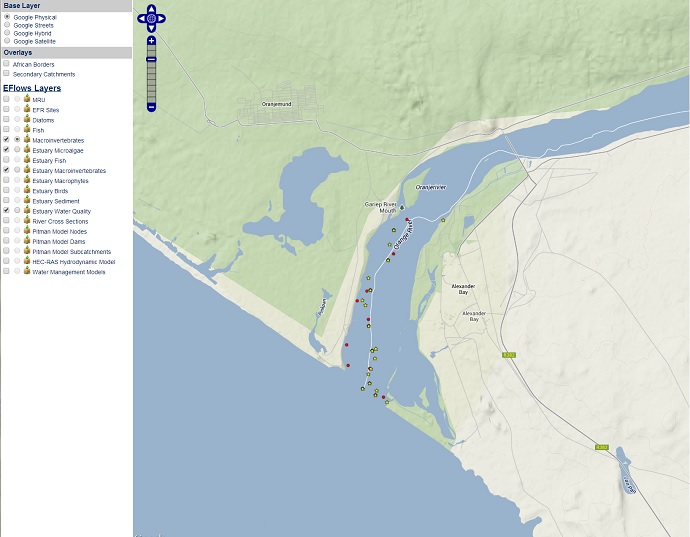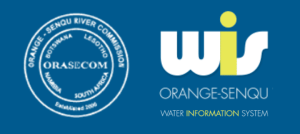Overview
The Orange-Senqu River riparian States (Botswana, Lesotho, Namibia and South Africa) are committed to jointly addressing threats to the shared water resources of the Basin.
This is reflected in bilateral and basin-wide agreements between the riparian states and led to the formation of the Orange-Senqu River Commission (ORASECOM) in 2000. The ‘Orange-Senqu Strategic Action Programme’ Project supports ORASECOM in developing a basin-wide plan for the management and development of water resources, based on Integrated Water Resources Management (IWRM) principles.
The water resources of the Orange-Senqu River are heavily utilised and the system is highly regulated with 23 major dams within its Basin. It is also connected to other river systems for water import and export via six inter-basin water transfer schemes.
ORASECOM acknowledges that future river basin management in the Orange-Senqu River Basin will need to balance competing water uses, and deal with the increasing rates of human-induced change and the mounting concerns about the causes and consequences of this change. One of the main aspects of this will be to ensure that sufficient water is left in the riverine ecosystem for it to continue to function in a predetermined ecological condition and provide for the people in the basin. This water is known as the Environmental Flow (EFlows).
EFlows are defined as the quantity, timing and quality of water flows required to sustain freshwater and estuarine ecosystems and the human livelihoods and well-being that depend on these ecosystems.
This project addresses Environmental Flow Requirements (EFR) of the ephemeral but nevertheless significant Fish River, and the Orange-Senqu River, from its confluence with the Fish River downstream to the Orange-Senqu River mouth.
This section of the basin has not been covered in any detail by the earlier studies, during 2009-2010. The importance of completing the Environmental Flow Requirements picture is important due to the fact that two large dams, one in the Lower Orange (Vioolsdrift Dam) and one in the Lower Fish (Neckartal Dam), are at an advanced state of planning.
Funding Organisation(s):
Global Environment Facility through United Nations Development Programme
Reports
- Brown, C. 2013. Basin-wide Environmental Flow Regime in the Orange-Senqu River Basin. Technical Report Number 45.
- Crerar, S, et al. 2011b. Research project on environmental flow requirements of the Fish River and the Orange–Senqu River mouth: Scoping paper and terms of reference. Technical Report Number 10.
- Louw , D, et al. 2011. Research Project on environmental flow requirements of the Fish River and the Orange–Senqu River mouth: Inception report. Technical Report Number 19.
- Louw, D, et al. 2012. Research project on environmental flow requirements of the Fish River and the Orange–Senqu River mouth: Delineation of management resource units. Technical Report Number 22.
- Louw, D, et al. 2013. Research project on environmental flow requirements of the Fish River and the Orange–Senqu River mouth: Consequences of flow scenarios on ecosystem services. Technical Report 26.
- Louw, D, et al. Research project on environmental flow requirements of the Fish River and the Orange–Senqu River mouth: Database. Technical Report Number 36.
- Louw, D, et al. 2013. Research project on environmental flow requirements of the Fish River and the Orange–Senqu River mouth: EFR monitoring programme. Technical Report 35.
- Louw, D, et al. 2013. Research project on environmental flow requirements of the Fish River and the Orange–Senqu River mouth: Estuary and Marine EFR Assessment, Volume 1, Determination of Orange estuary EFR. Technical Report 32.
- Louw, D, et al. 2013. Research project on environmental flow requirements of the Fish River and the Orange–Senqu River mouth: Estuary and Marine EFR Assessment, Volume 2, Orange estuary EFR supporting information. Technical Report 33.
- Louw, D, et al. Research project on environmental flow requirements of the Fish River and the Orange–Senqu River mouth: Estuary and Marine EFR Assessment, Volume 3, assessment of the role of freshwater inflows in the coastal marine ecosystem. Technical Report Number 34.
- Louw, D, et al. 2013. Research project on environmental flow requirements of the Fish River and the Orange–Senqu River mouth: River and Estuary EFR Assessment, Hydrology and river hydraulics. Technical Report 31.
- Louw, D, et al. 2013. Research project on environmental flow requirements of the Fish River and the Orange–Senqu River mouth: River EFR Assessment, Volume 1, Determination of Fish River EFR. Technical Report Number 27.
- Louw, D, et al. 2013. Research project on environmental flow requirements of the Fish River and the Orange–Senqu River Mouth: River EFR Assessment, Volume 2, Fish River EFR supporting information. Technical Report 28.
- Louw, D, et al. 2013. Research project on environmental flow requirements of the Fish River and the Orange–Senqu River mouth: River EFR Assessment, Volume 1, Determination of the lower Orange River EFR. Technical Report 29.
- Louw, D, et al. 2013. Research project on environmental flow requirements of the Fish River and the Orange–Senqu River mouth: River EFR Assessment, Volume 2, Lower Orange River EFR supporting information. Technical Report 30.
- Louw, D, et al. 2013. Research Project on environmental flow requirements of the Fish River and the Orange–Senqu River mouth: Summary report. Technical Report 37.
Data and Maps
A project website has been established which provides reports, detailed data and an interactive map for the products from this project.

